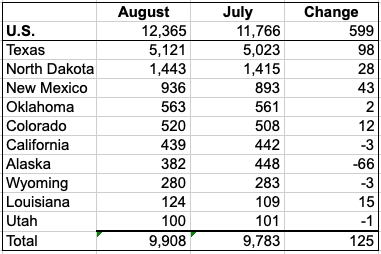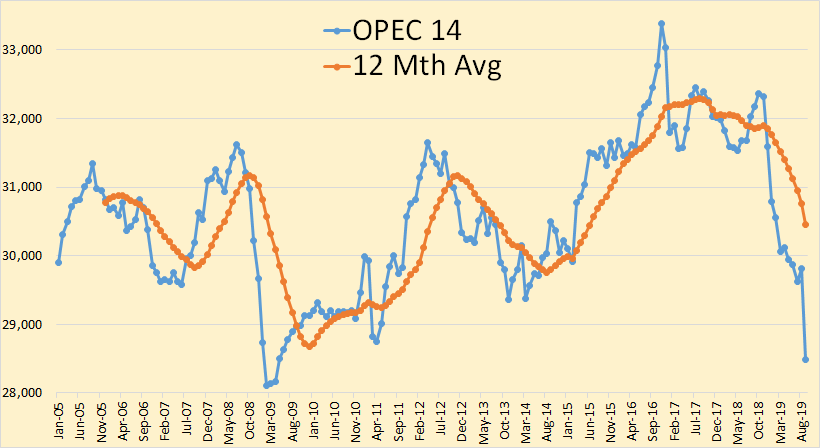All data for this post is from the EIA’s Petroleum Supply Monthly
The charts below are primarily for the largest US oil producing states (>100 kb/d) and are updated to August 2019. If you are interested in additional states, let it be known.
Ron has asked if I would take over the monthly posts for USA oil production. I have tentatively agreed to do that. Let us all thank Ron for his work at tracking US production and for his insights. Ron will continue to monitor what’s happening with US production and provide his comments. He is not going away.
This is my first post on US production by state. If you spot any errors, please let me know and I will try to fix them.

